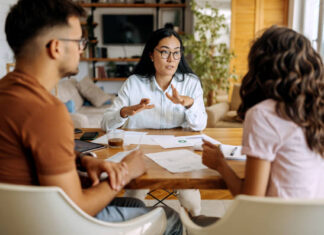Street lighting keeps a substantial part in the maintenance of healthy activity in densely populated districts. Also, street lighting is essential for minimizing street felonies and injuries. Additionally, every street light manufacturer provides creative utilization and promotional goals. Keeping energy usage aside, street lights can propagate other problems that should be taken care of, such as accommodation reflex, blinding effect, maintenance problems, and illumination pollution. The perfect solution for illuminating exterior areas must offer a complete answer to all these factors.
Electric lights are usually separated into three primary categories: gas discharge lamps (photographic flashes, fluorescent lamps, etc.), incandescent light lamps, and semiconductor lamps (such as LED; light-emitting diode). Each source of light needs analysis by the functionality, efficacy, and price in order to provide suitable lighting for different locations. What is good for concerning domestic attribute does not necessarily match a parking area, a manufacturing facility, or a freeway.
Outside areas such as streets and playgrounds need intensive illumination. Street lights always illuminate large outdoor areas for vehicles and pedestrians. During a suicide attempt, an assessment is needed for illumination form is optimal for parking lots or street-lights or any other application.
Multiple factors may influence the final output that should be taken into consideration. Light absorption, lifespan, color, light direction, greenhouse gas emission, energy consumption, level of luminosity, and physical durability are all significant parts of the checkup list.
Conventional Lamps
Different kinds of fluorescent and incandescent light lamps are currently among the most frequently used sources of light around the globe. The main reasons for that are low cost and the human tendency to stick with the familiar.
Incandescent lamps produce light through warming up a thin wire through an electrical current. The glass lamp contains an inert gas that does not react with the filament and saves it from oxidation. The filament shines when it reaches high levels of temperature.
Since a majority of the emitted radiation converts into heat (about 90 %) instead of visible light, the luminous efficacy of conventional lamps is incredibly modest. The effectiveness ranges between 10-15 Lumens per watt.
Incandescent lamps are sensitive in regard to vibrations, electric current shifts, and additional local conditions. They experience 10-15 % light depreciation, and their life expectancy (standard) is considerably shorter compared to most other lighting techniques (1,000 hours). This factor is crucial when planning street light systems, where compatible replacements produce expensive and slow maintenance works.
Fluorescent Technology
Fluorescent technology produces electricity to release inert gas in mercury vapor that inevitably generates visible light. The latest fluorescent lamps contain a reasonably high-efficiency level that is equal to 80-100 Lumens per watt.
They direly need components like starters and ballasts in order to perform. Ballasts or starters take the essential cost of lamps to rise. The fluorescent pipes include mercury, hence, are classified as contaminated materials.
These lamps have a natural tendency for flicker and starter issues, reduced efficacy via the time that results in dim pink light, and color rendition is regarded as distorting and uncomfortable. Besides, fluorescents often produce humming voices and are sensitive to extreme fluctuations and temperatures. The fluorescent lamp has a lifespan between 10,000 to 20,000 hours, although the numbers could go down due to frequent switching. It consumes a relatively large space, however, throws the light better than incandescent lamps.
LED Lights
Light Emitting Diode is the latest semiconductor source of light, a recombination procedure of electron holes and electrons. In contrast to standard light lamps, LEDs’ performance is not relative to energy usage.
LED’s light efficacy level today has reached 160 Lumens per watt, and the number is increasing. It is not impacted by design or dimensions. The LED’s size may be modest, and other optical parts can be included to make a specific radiation pattern.
The span of LED ranges between 50,000-100,000 hrs. However, hours can be extended when managed through smart lighting techniques. LED offers adequate controllability. It controls the intensity, shade, and direction of light. LED also displays multiple colors without the requirement of the external filter, like other light sources. LED lamps to have exceptional resistance, which makes them ideal for outdoor locations that need to fight from traffic, weather, and various external hazards.
Summary
Street lights have become a necessity for maintaining the basic safety and the standard functioning of a society. Also, street lamps are significant energy consumers, and they demand intensive maintenance as they produce 6 % of the global greenhouse gas (GHG) emission.
LED lamps are more efficient than any traditional light source if we talk about luminous efficiency and span. As a result, they permit a radical minimization of maintenance costs. LEDs have a proven record for better viewing experience together with reduced GHG emissions. They are super resistant, very dimmed, focused, and maybe manufactured to suit various sites through modifications of shape and color.
The main advantage of the conventional light source compared to LED lamps is their affordability. LED’s up-front cost is higher than many other street lights sources. Even though it continually decreases and is remarkably lucrative in due course, if maintenance cost saving is calculated.
LED lamps are efficient when linked with a smart control system. Bright light controlling gives the delivery of aggregate data from each lamp pole and entire control over every functioning of a light source.









